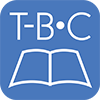By Tyson Thorne

To understand Jonah requires understanding some of the history of his time. The Assyrian empire formed circa 1100 b.c. and began a military empowered expansion program a couple centuries later. During Jonah’s lifetime, the Assyrians had enveloped many Syrian and Palestinian territories and had become the greatest world power. Even the Northern Kingdom paid duties to Assyria, causing a hatred of Assyrians by Jews that surpasses any good sports rivalry today. Running a close second in military power and Semitic hatred were the Babylonians, who would some centuries later conquer Assyria and lead the Southern Kingdom into captivity.
Ninevah was Assyria’s capital city. As such it was highly fortified, the city walls rising ten stories above the ground, and the moats running three stories deep. Located along the Tigris (about 500 miles from Jerusalem, as the crow flies), it was most often approached by sailboat. Indeed, the great city walls must have intimidated any visitor to Ninevah, as they saw them looming over the horizon as the ship approached, only getting larger and larger as the ship made its approach. Outside the walls were spiked turrets upon which would be impaled foreign officers, still alive and suffering immeasurably.
Aside from its military prowess, there were other reasons to be afraid. The value of life, for example, was non-existent in their culture. Often slaves and foreigners were beaten to death, their bodies left in the streets for horses and carriages to run over. Ninevah was beyond gruesome, held in the iron grip of Satan himself.
Author & Date of Composition
While one of the most well-known prophets of antiquity, very little is known about the prophet Jonah himself. From the text of the book bearing his name we understand he was the son of a man named Amittai and from the small village of Gath-Hepher (2 Kings 14.25) in the Northern Kingdom (see map).
Islamic tradition states his family is of the tribe of Benjamin, which fits well with a Jewish tradition that Jonah was the boy brought back to life by Elijah (1 Kings 17.17-.24). If true, his mother would have been from Zarapheth (in modern day Sarafand, Lebanon) which is also the likely site of Jonah’s burial despite an Islamic tradition of his tomb being in modern day Mosul, Iraq. The tomb attributed to Jonah in Mosul was destroyed by militant Islamist group ISIS on July 25th, 2014.
As far as his actual work is concerned we know of only one other occasion God used him to communicate a revelation. He told Jeroboam II that under the kings direction Israel’s borders would be restored, and that the restoration would not be due to the king’s righteousness (in fact the king was quite the opposite of righteous), but rather due to the distress of the people (2 Kings 14). The events recorded in the book of Jonah are apparently after his encounter with Jeroboam II.
Jonah grew up during a time that Israel was weak and paying tribute to Assyria. In fact, the nation was suffering an economic crisis up until the time of Jeroboam II, the king under whom Jonah was sent to Nineveh. Jonah was given this prophecy around 780 BC. He was a contemporary of Amos.
The Book
I. Jonah Disobeys the Lord, 1.1-2.10
II. Jonah Obeys the Lord, 3.1-4.4
III. Epilogue: God’s Object Lesson, 4.5-.11
